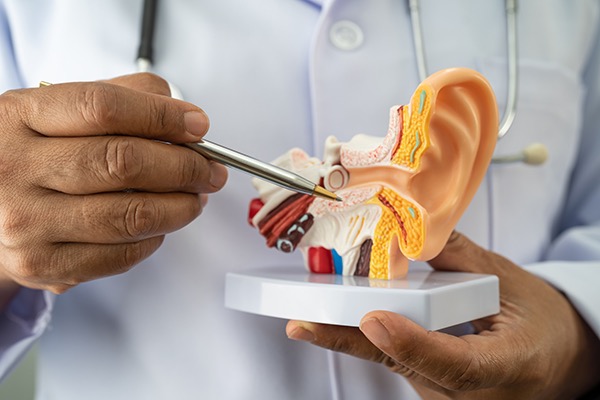Human Ear Anatomy
Hearing the world around us is one of our vital senses, but how does it work? At first glance, we only see a small part of the organ and system responsible for hearing. This part of your ear is soft, flexible, and attaches to the side of your head. Each part of your ear serves an essential function in the hearing process.
Anatomically, the human hearing system includes the outer ear, middle ear, and inner ear. Your ear canal and eardrum connect these three components, with all external sound being transferred through it. Below, the hearing experts at AudioNova review some important information about the anatomy of the human ear. Contact us to learn more or schedule a consultation.
The Outer or External Ear
When looking at someone's ear, the auricle and the part of the outer ear canal that extends into the head are visible. Sound waves first arrive at the outer ear and are guided through the auricle, which acts as a natural funnel. The shape of the outer ear amplifies sound and resonates it through the middle and inner ear. The outer ear's natural anatomy also prevents wind from causing interrupting background noise.
The Middle Ear Functions
Your middle ear includes the area directly behind the ear drum. The eardrum protects your inner ear and absorbs incoming sound waves. From there, minute oscillations are conducted to three tiny ossicles, the smallest bones in the human body. These tiny bones can amplify oscillations 20-fold, ensuring sound is adequately conducted to the inner ear.
The Role of the Inner Ear
The "Oval Window" connects the inner and middle ear. Inside the oval window sits the organ of equilibrium and the cochlea. The cochlea is a fluid-filled, spiral-shaped cavity in the inner ear that plays an essential role in auditory transduction. The central canal in your inner ear is home to the organ of Corti, the primary organ for hearing. Your inner ear also contains the vestibular organ responsible for balance.
Auditory Transduction to the Brain
We only apply meaning to sound waves once they're transformed into electrical signals and sent to the brain. Electrical impulses travel along the auditory nerve and pass through many information processing centers. When meaning is attached to tones, they connect to existing patterns within the brain’s auditory cortex. This process allows us to understand someone speaking, recognize a person’s voice, and make judgments about hazardous situations.
Air & Bone Conduction Processes
Sound waves reach the inner ear through air and bone conduction. With bone conduction, air hits the outside of the skull and makes it oscillate slightly. When the oscillating air is interrupted by various signs of hearing loss, bypassing the system with bone conduction devices like cochlear implants is an option for some hearing healthcare patients. However, the process of air conduction is less effective than bone conduction hearing.
Frequently Asked Questions About Your Ear’s Anatomy
Below, our hearing experts answer some common questions about the hearing process.
How do decibels impact hearing? A decibel (dB) is a unit that measures the intensity of sound or how loud it is. Any sound higher than 85 dB can cause permanent hearing loss, particularly when the exposure is prolonged or repeated. If you’re exposed to loud sounds regularly, your risk for permanent hearing loss increases over time. To put things into perspective, the decibel rating for firecrackers and firearms is 150, while the decibel rating of a normal conversation between two people is 60 dB.
What does the inner ear do? The inner ear is essential for proper hearing and balance. Within the inner ear, complex structures perform distinct functions, including converting mechanical sound waves into electrical signals and sending them to the brain. The inner ear also provides critical information regarding body movement and balance, allowing us to interact with our environment more effectively.
How do I know if I have hearing loss? Hearing loss is a condition that typically occurs gradually over time. Some common symptoms or signs of hearing loss include asking others to repeat themselves often, always turning up the volume while watching television, hearing ringing in your ears, and feeling like people are always mumbling. Scheduling a comprehensive hearing test with an audiologist is the best way to get an accurate hearing health status.
Take Control of Your Hearing Health
The ear isn’t just responsible for hearing. This complex system of vital parts not only makes it possible for humans to hear but also to walk and interact with their surrounding environment. The hearing experts at AudioNova will be with you every step of your journey towards better hearing health. Our clinical teams offer comprehensive services to assist you with all your hearing needs and concerns. There’s no better time to start hearing the world around you more clearly. Contact us today to learn more or schedule a consultation with a provider.
















